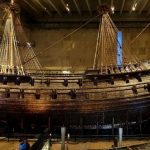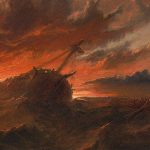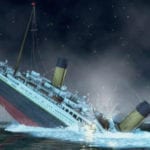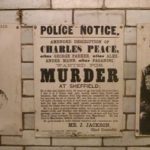 Technology
Technology  Technology
Technology  Humans
Humans 10 Everyday Human Behaviors That Are Actually Survival Instincts
 Animals
Animals 10 Animals That Humiliated and Harmed Historical Leaders
 History
History 10 Most Influential Protests in Modern History
 Creepy
Creepy 10 More Representations of Death from Myth, Legend, and Folktale
 Technology
Technology 10 Scientific Breakthroughs of 2025 That’ll Change Everything
 Our World
Our World 10 Ways Icelandic Culture Makes Other Countries Look Boring
 Misconceptions
Misconceptions 10 Common Misconceptions About the Victorian Era
 Mysteries
Mysteries 10 Strange Unexplained Mysteries of 2025
 Miscellaneous
Miscellaneous 10 of History’s Most Bell-Ringing Finishing Moves
 Technology
Technology Top 10 Everyday Tech Buzzwords That Hide a Darker Past
 Humans
Humans 10 Everyday Human Behaviors That Are Actually Survival Instincts
 Animals
Animals 10 Animals That Humiliated and Harmed Historical Leaders
Who's Behind Listverse?

Jamie Frater
Head Editor
Jamie founded Listverse due to an insatiable desire to share fascinating, obscure, and bizarre facts. He has been a guest speaker on numerous national radio and television stations and is a five time published author.
More About Us History
History 10 Most Influential Protests in Modern History
 Creepy
Creepy 10 More Representations of Death from Myth, Legend, and Folktale
 Technology
Technology 10 Scientific Breakthroughs of 2025 That’ll Change Everything
 Our World
Our World 10 Ways Icelandic Culture Makes Other Countries Look Boring
 Misconceptions
Misconceptions 10 Common Misconceptions About the Victorian Era
 Mysteries
Mysteries 10 Strange Unexplained Mysteries of 2025
 Miscellaneous
Miscellaneous 10 of History’s Most Bell-Ringing Finishing Moves
10 Reasons the Titanic Sank Besides the Iceberg
It’s been over a century since the RMS Titanic went down, killing an estimated 1,500 people. The tragedy shook the world when it happened and has stayed in pop culture thanks to movies, songs, books, and even a musical dedicated to its courageous passengers and macabre history.
We all know the iceberg is the primary reason the Titanic sank. What you might not know is that there are a slew of contributing factors that led to the disaster. Here are ten reasons the sinking of the Titanic was as terrible as it was, beyond the obvious culprit.
Related: 10 Puzzling Unsolved Mysteries from Ancient History
10 Calm Waters
It sounds crazy, but in some cases, calm waters are more dangerous than stormy ones.
On the night of April 14, 1912, passengers on the Titanic enjoyed gorgeous weather. One survivor reported, “Perfect serenity for miles… the water looked like molten silver.” With little to no waves in the water, there was no luminescence from plankton, which normally would have glowed around the iceberg, allowing it to be seen from afar.
It was generally believed at this time that on a clear night, icebergs could be seen within one to three nautical miles (1.8 to 5.6 km). Despite the lack of a moon due to the clouds, the calm waters offered a false sense of security. The lookouts’ guards were down, and the ship traveled at a faster speed than it would have if there had been any fog or waves.[1]
9 Portholes
Most passengers aboard the Titanic were safely sleeping the night away in their beds when the ship suddenly shuddered. At 11:40 p.m., it hit an iceberg in the North Atlantic Ocean. Naturally, after being so rudely awakened, many guests were curious to see what they’d hit and why the ship had stopped moving.
People opened their porthole windows to stick their heads out, and most never closed them when they went on deck to flee. The open portholes allowed water to enter the ship at a much faster rate than normal, contributing to the incredibly fast sinking timeline. Titanic expert Tim Maltin said that just 12 open portholes would have doubled the damage—and with hundreds of portholes and even more curious passengers, it’s likely the numbers are even higher.[2]
8 Weak Rivets
Today, ship plates are welded together using oxyacetylene torches, but in 1912, steel hull plates like the Titanic’s were held together by rivets that were hammered in by hand. Recent studies by metallurgists Tim Foecke and Jennifer Hooper McCarthy found that the materials used in building the Titanic were extremely low-grade, much more dangerous than the normal kind found in luxury liners at the time.
While there’s no way to know for sure, it’s likely that a lack of higher-grade rivets or a last-minute problem with the shipyard’s equipment is to blame. Foecke and McCarthy said that the rivets used would have ripped apart much more easily than the ones that were supposed to be used.[3]
7 A Typo
Captain Edward Smith had received multiple warning messages from other ships in the area the morning of the Titanic’s sinking. The ship’s course was adjusted accordingly to avoid the ice, but throughout the night of April 14, nine more warnings came in as the Titanic sailed west.
One of these, from the liner Mesaba (which would also end up sinking four years later), never made it to Smith. The Mesaba’s wireless operator sent a message that there was severe ice directly on the Titanic’s path, a message that should have been signed “MSG” for “master must sign.” This would mean that the wireless operator was required to get the captain’s signature
Unfortunately, the Mesaba’s operator made a small mistake, typing “MXG” instead of “MSG.” Multiple ice warnings had come in throughout the day, and the Titanic’s radio operators were sifting through hundreds of passenger telegrams from the United States. The Mesaba’s warning was ignored by the Titantic’s wireless officer, Jack Phillips, and thrown in with the other warnings. If the message had been relayed to Captain Smith, because of the specific nature of the location of the ice within the Titanic’s path, there is a great chance the tragedy could have been avoided.[4]
6 Last-Minute Order
Moments before the fatal impact, First Officer William Murdoch telegraphed the engine room to reverse the ship’s propellers in a last-minute attempt to avoid the collision. Unfortunately, it was too late to completely reverse the ship, but the propeller could be stopped instead.
Scientist Richard Corfield says that though Murdoch was trying to save the ship, it actually could have been the nail in the coffin. “The fact that the steering propeller was not rotating severely diminished the turning ability of the ship,” he explained. Even more unfortunately, the ship might actually have avoided the iceberg on its own if Murdoch had not told the engine room to reduce and then reverse the thrust.[5]
5 No Binoculars
If only the iceberg had been easier to see. If only the SS Californian had come to the rescue. If only the lookout in the crow’s nest had had binoculars.
Wait, what? Why would a ship’s lookout not have binoculars to help him see? The answer lies with one unfortunate sailor named David Blair, who locked the ship’s binoculars in a locker in the crow’s nest. At the last minute, Blair was reassigned from the Titanic to the RMS Olympic, but he forgot the keys in his pocket, leaving the new lookouts without any visual assistance.
Titanic lookout Frederick Fleet testified in investigations into the accident that if he had had binoculars, he would have “seen it a bit sooner.” When asked how much sooner, he claimed he wasn’t sure, but “enough to get out of the way.” Despite this, the investigation found that the lack of binoculars was not a large contributing factor to the disaster.[6]
4 “Shut Up”
Jack Phillips, the wireless officer of the Titanic on her voyage from Belfast to New York City, may have one of the most unfortunate positions in history. As the main point of contact for the Titanic while she was at sea, many have speculated that it was because he didn’t pass on many of the warning messages from other ships to Captain Smith.
One of the most egregious examples of this happened at 22:55 that night: A nearby ship, the SS Californian, reported that they were surrounded by ice. Phillips’s response to their warning was, “Keep out; shut up, I’m working Cape Race,” referring to the area of land where he was receiving messages for passengers. Reportedly, this is because the Californian’s messages came into Phillips’s ear so loudly he couldn’t hear from Cape Race.
Phillips’s outburst had severe consequences. Beyond the obvious fact that another warning from a nearby ship might have helped the Titanic’s crew be more vigilant, in his annoyance, Phillips turned off the radio. This added time to the ship’s distress call, which would go out a few hours later, as she sank to the bottom of the ocean.[7]
3 Speed
Most Titanic experts agree that the ship was going faster than she should have been on the night of April 14, 1912, when she hit the iceberg. What they can’t agree on is why.
One popular theory is that Captain Smith was hoping to beat the previous record for crossing the Atlantic in a White Star Line ship. There are also rumors that Smith was worried he would arrive late in New York City, and under pressure from the White Star Line director Bruce Ismay, he sailed faster than usual. When the Titanic hit the iceberg, she was traveling at 22 knots, only 2 knots short of her maximum speed.
To be fair to Captain Smith, most ships would have been traveling at the same speed in this situation. Maritime standards suggested traveling as quickly as possible through perilous zones in order to minimize the amount of time in dangerous conditions.
Regardless of the reasoning, there’s no doubt that if the Titanic had been traveling at a slower speed, the damage sustained would have been much less impactful.[8]
2 Coal Fire
Sailing on a ship that previously had a fire probably doesn’t sound great. But in 1912, it was a fact of the sea. Steamships caught on fire frequently thanks to spontaneous combustion of the coal, so no one thought twice when a small fire began in one of the Titanic’s coal bunkers on April 13.
Though it wasn’t a big deal at the time, investigations into the ship’s sinking discovered this could have been a contributing factor to the boat’s misfortune. The coal bunker was directly next to the hull, which means it’s possible the fire could have seriously damaged the Titanic’s structure.
Though this was brought up in the original 1912 investigation, even citing its own official inquiry by British officials, the theory was not pursued. Historian Senan Moloney theorizes this may be because the presiding judge may have had his own shipping interests and did not want to affect Ireland’s commerce.[9]
1 Ignored Distress Calls
Captain Edward Smith of the Titanic goes down in history as one of the most noble men to ever sail the seven seas. His willingness to go down with his ship and forgo his life in the name of his honor has been immortalized and praised in books, movies, and museums. The same cannot be said for Captain Stanley Lord.
Lord was the captain of the SS Californian, the ship that was nearest to the Titanic when she sank. According to some sources, it was well within distance to have given her assistance during the tragedy. When the Titanic sent out distress flares during the sinking, Lord was awakened from his sleep by the crew. Tired from working 17 hours straight, Lord dismissed them as “company rockets,” usually used to help liners identify themselves to ships of the same company.
Lord’s neglect of the Titanic’s flares would haunt him for the rest of his life. He was seen as a fool for ignoring the cry for help and was fired soon after.[10]








